There's no point spending big on a bike then storing it somewhere where it's vulnerable.
For those of us without the space to store our pride and joy inside the house, garages and sheds are the next best thing, but they can still be vulnerable to break-ins.
If you want to keep thieves at bay, we've got some handy tips to make your bike shed storage more secure.
The first rule of shed club…
The first rule of bike storage is simple: don't let people know you have a bike. A garage or bike shed is never going to be up there with Fort Knox in the security stakes, but it doesn't need to be if you take the right approach.
If the local ne'er-do-wells don't know you have a valuable bike in your shed, they are unlikely to put much effort into breaking in, especially if you fit enough basic security measures to convince them to move on to an easier target. It's easier said than done, but there are some simple things to avoid.
Do you use Strava? It's crucial that you either don't start recording your ride until you're a few miles away from your house, keep your profile private, or set up a 'privacy zone'. The last thing you want is to provide thieves with a direct map to your front door.
It's also tempting to put up pictures of your shiny new bike on social media. While it's great you are proud of your bike, be cautious. Think about whether your profile gives away enough clues to work out where you live, as well as showing exactly how lovely your new bike is and where it may be stored.
Location, location, location
Where you choose to store your bike will depend on a number of factors, including the value of the bike or bikes, your budget and the amount of available space, but the key criterion should be the location.
If you live in a dodgy area, even bricks and mortar may not deter the criminals. On the other side of town, a wooden shed with a few extra security measures may be enough.
There are five main types of storage to consider:
- Inside your house – This will depend on the amount of space you have and the tolerance levels of your partner/spouse/flatmates. Overall, security is high, especially if you can lock your bike to an immovable object.
- Garage – Perfect. You can store your bike and work on it, without worrying about getting oil stains on the carpet. The drawback? Not everyone has one or has the space/money for one. The door is generally the weak point, but you can improve security by fitting a Garage Door Defender. Internally, you can beef up security by using a ground or wall anchor (see below) and a decent motorcycle chain.
- Brick/breeze-block shed – The next best option, but if you haven't already got one they're not cheap and may need planning permission. See below for some tips on making it more secure.
- Flat-pack shed – They're relatively cheap, easy to put up and will hide your bike(s) from view, but they're far from secure. For the purposes of this article, we'll focus on this type of storage because it's a common choice and there are some simple precautions you can take to make your shed much less attractive to thieves.
- Standalone bike shelter – If you're short of space and need somewhere dry to store your bike, these are an option. In many cases they are no more secure than a shed (or considerably less so) and offer no room to work on your bike, but there are much burlier options out there, including metal bike sheds from the likes of Asgard. See below for more tips on making a standalone bike shelter more secure.
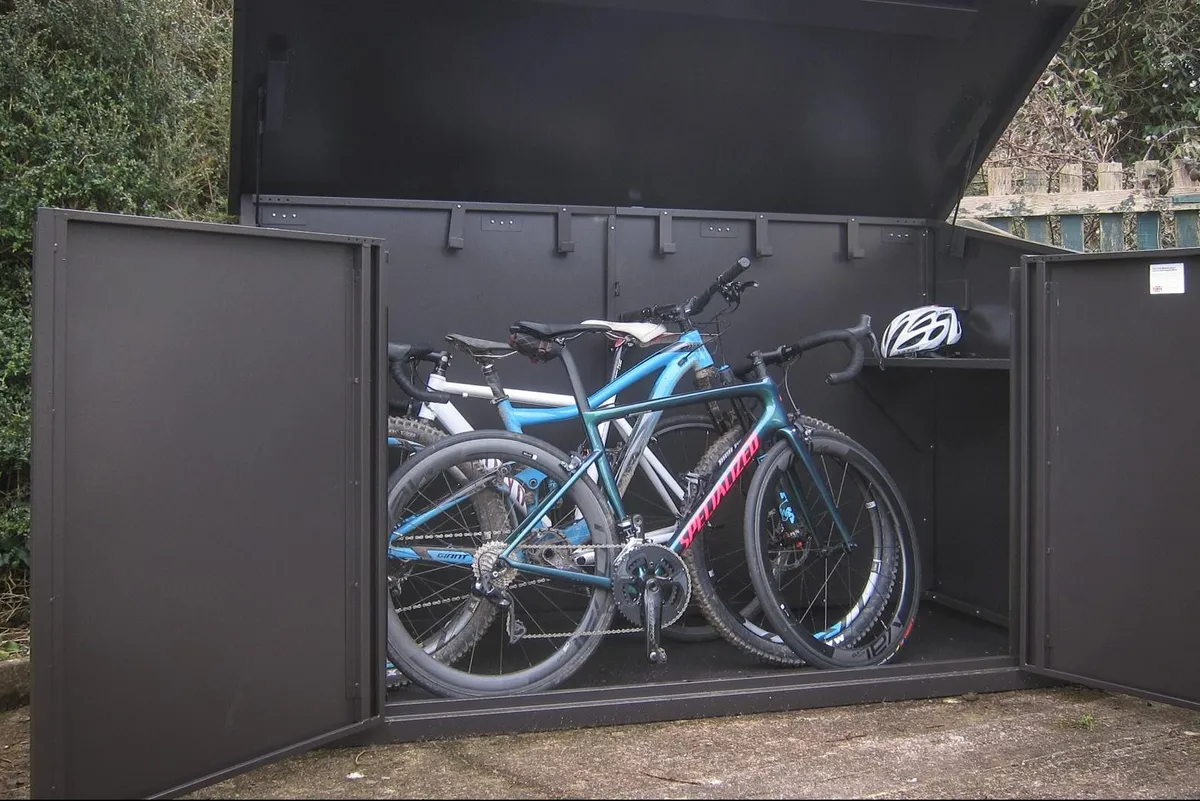
Are your bikes insured?
Insuring your bikes will provide peace of mind should the worst happen. You should always pay attention to the small print when taking out an insurance policy but, in this instance, if you're not storing your bikes inside then it's particularly important to ensure any policy covers a wooden shed or wherever you choose to keep your bikes.
Only some policies cover bike storage in lockable wooden sheds and almost all require bikes to be secured to an immovable object.
If you’re looking for a quick comparison of the best bicycle insurance on the market, check out our insurance comparison tool, developed in conjunction with QuoteZone, which will provide quotes for cycling-specific coverage from a wide range of leading providers.
5 top tips for bike shed security
Whether you've decided on the wooden shed option, or just want some ideas on making other forms of storage more secure, here are some handy tips:
1. Be realistic
A shed is never going to stand up to a serious attack by thieves. Offenders have been known to pry open a whole side panel or roof to get inside.
The trick is to site it in an area where it is difficult for thieves to operate, avoid drawing attention to it, and install as many security measures as possible to protect your precious bike(s).
The harder you can make a thief work, and the longer it takes them to crack your defences, the more likely they are to pass up the opportunity, or give up and move on to an easier target.
2. Choose your shed location carefully
The ideal site for your shed is somewhere difficult for thieves to reach, yet not so tucked away that criminals can operate without fear of being seen.
In this case, the shed below has been built in a backyard/driveway accessed by a private road. The shed can't be seen from the main road and because the access road is only used by a handful of households, any strangers in the area will immediately arouse suspicions.
The neighbours are friendly and several are around during the day. The shed can be seen from a number of surrounding houses and is within range of a security light fitted with a movement sensor. When a car is parked in the driveway next to the shed, the door can't be opened, providing extra security.

3. Take care when choosing the type of shed
There are three main types of shed: wood (cheap and blends in well but prone to rotting and less secure), metal (strong, durable and fire retardant but prone to rust, and walls are very thin on cheap models) and plastic (low maintenance but prone to condensation). Generally, the more you pay, the thicker the walls will be and the more secure the shed will be.
4. Think about the design of the structure
If the shed is going to be used purely for storage, and not as a workshop, consider getting one without windows because these are an obvious weak point. The door should be clearly visible, either from your house or neighbouring properties. Double doors will enable you to get bikes in and out more easily.
5. Work out the shed's weaknesses
In this case, the door hinges are secured by small screws, the lock provided with the shed is extremely basic and the windows mean the contents are on display. Inside there is nothing to lock your prized possession(s) to.
Step-by-step guide to improving bike shed security
In the first half of our guide, we showed you how to improve the basic security of your shed. In part two we'll explain how to really beef-up your shed's security.
1. Toughen up the hinges
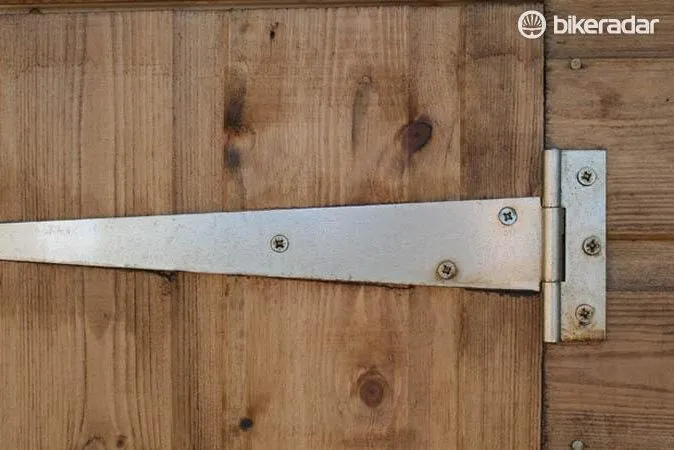
In this case, the hinges are attached to the soft timber door using seven short screws. If a thief shoulder barges/kicks the door with enough force, these could just rip out of the wood.
Failing that, it wouldn't take a determined thief long to simply unscrew them all.
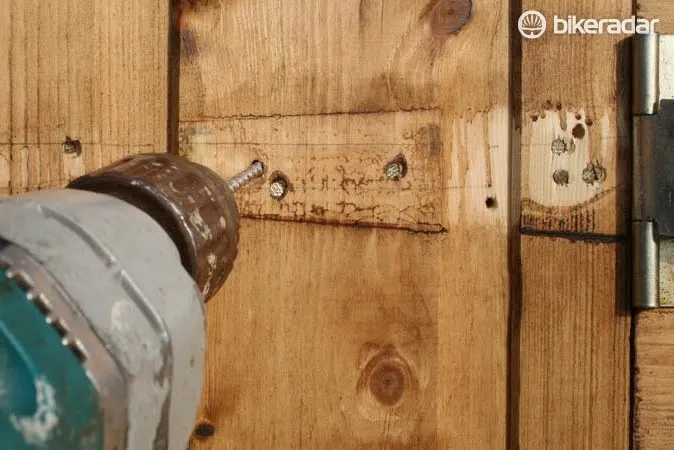
To make life harder for the crims, take out the screws, widen the holes using a drill and replace the screws with nuts and bolts.
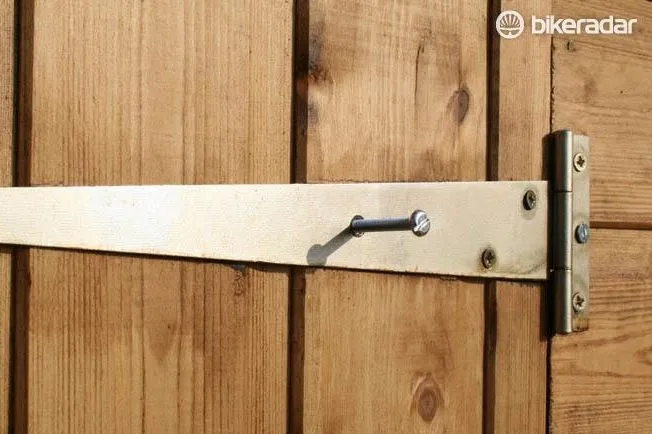
Then you need to make sure thieves can't simply unscrew the bolts. In this case, we've added a drop of superglue where the shaft of each bolt meets the nut.

Other options include using Allen key bolts and hammering ball bearings into the end so they can't be unscrewed, or using one-way security screws.
2. Add hasps and padlocks
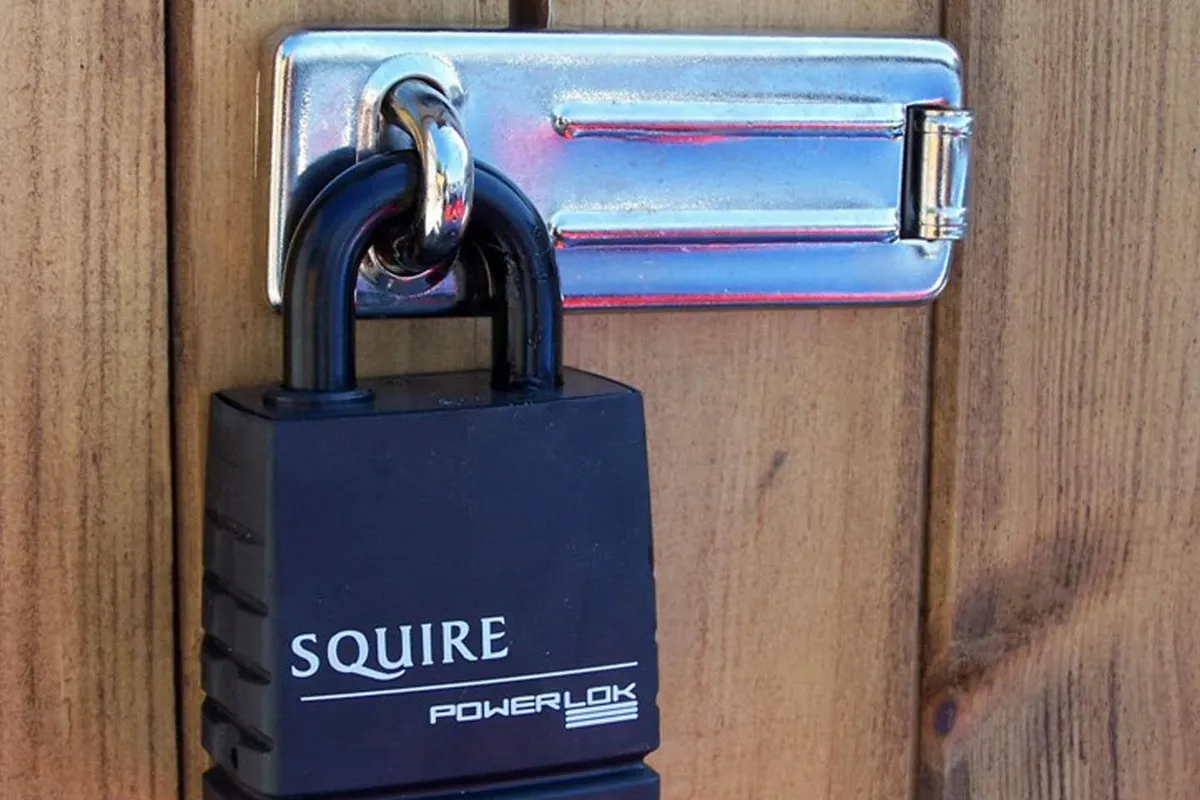
The basic locks that come with most sheds are next to useless, so fit at least one hasp with a decent padlock.
There is always a trade-off between increasing security and making it obvious you've got something to hide. Fit several hasps with high-end padlocks and you risk attracting unwanted attention, but rely on the in-built lock and you may regret it.
Here we've used a Powerlok from Squire, which has an 11mm shackle made of hardened boron alloy steel and a five-pin tumbler lock. It comes with a 10-year guarantee. Consider using different locks from different manufacturers to make a thief’s job that little bit harder.
Again, using bolts to secure the hasps instead of screws will make them harder to break.
3. Fit an alarm
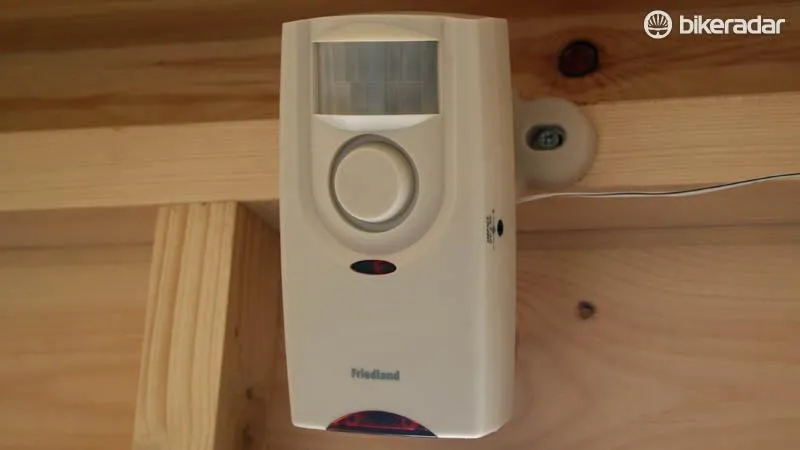
At the end of the day, a determined burglar is always going to be able to break into your shed. The next step is to make sure they don't hang around if they do breach the external security. An alarm is the obvious answer.
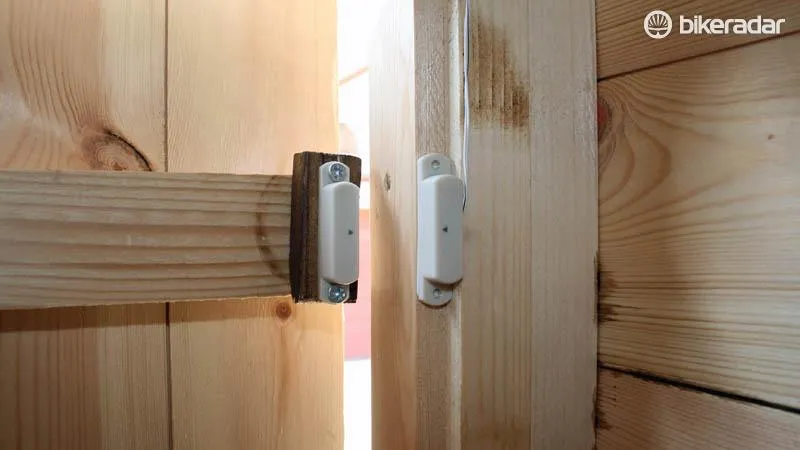
They're available from most DIY/hardware stores or online.
This particular model combines a movement sensor with a door trigger and can be armed and disarmed using a key-fob remote control. The sensor is angled to cover the windows, so if anyone breaks the glass the alarm should sound.
Home security devices have improved significantly in recent years, so you may also consider fitting an alarm or camera that can be monitored via a smartphone.
4. Obscure the view through the windows
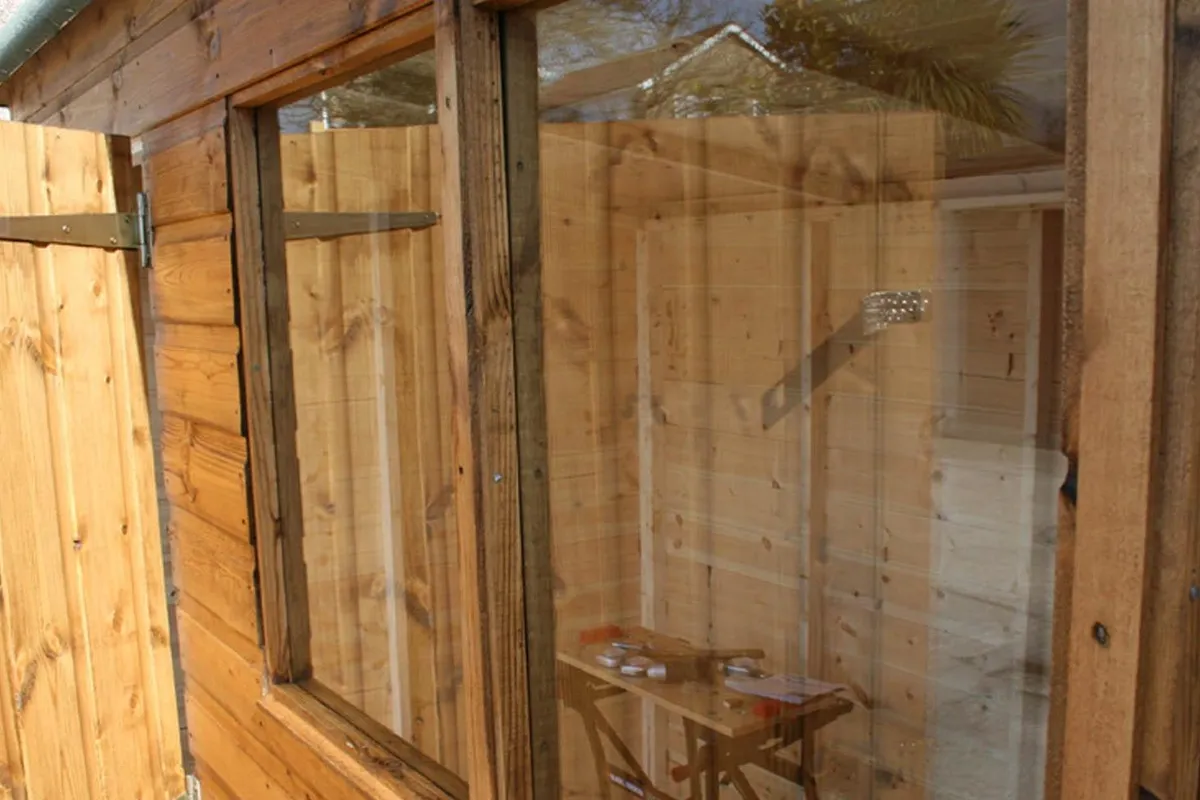
If a thief can see you have an expensive bike, they're more likely to go through the effort of breaking into your shed rather than moving onto an easier target.
Windows are an obvious weak point. If your shed is purely for storage, try to find one without any windows. If you'll be using it as a workshop, a bit of natural light may be worth the slight loss of security.

There are various ways to make the glass opaque and stop would-be thieves from peering in.
In this case, we've gone for a can of spray-on glass frosting from a DIY store. The advantage of this method is that it can be washed off with warm water if needed.
Other options include stick-on film sheets (difficult to apply without air bubbles but have the added advantage of preventing the glass from shattering if broken) and replacing the original windows with opaque glass.
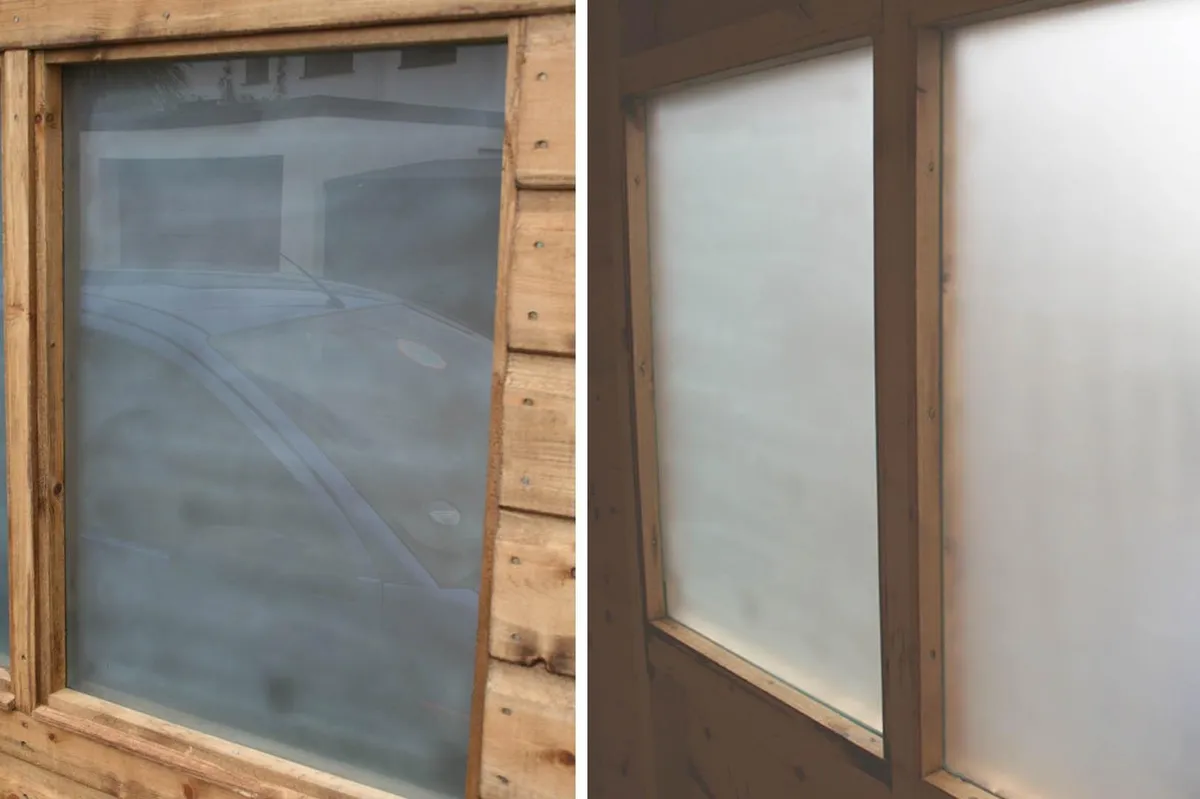
Once applied, light can still flood in but it's impossible to make out what is stored inside. Another option is to board up windows, but that, of course, will prevent natural light from getting in, even if it does improve security.
5. Consider securing the shed to the ground
In this case, the shed pictured is large (5ft x 12ft) and heavy – it took six people to lift the roof into place – so it is unlikely thieves will be able to simply lift up one side to gain access.
However, if you feel there is a risk of this happening to you, consider fixing the shed to the ground using L-brackets (also known as corner braces or angle brackets), screws and Rawl plugs.
Improving your shed's internal security measures
The first and best line of defence is to stop a thief getting into your garage or shed in the first place, but if the worst should happen, having your bikes securely locked down may stop them being rolled out into the night and off to the dodgy second-hand market, or sold for parts.
One thing that will make the thieves job easier is having tools to hand. There's no point in having secure locks if you've got crowbars, saws and screwdrivers within reach.
Make sure any tools you do have are either locked securely away in the shed or stored in a different location. Apart from anything else, you don't want them going missing as well.
While these measures will help prevent a thief from making off with your frame, the parts on your bike are another story. Working undisturbed, some thieves will strip down a locked bike, removing things such as dropper seatposts, handlebars and even brakes and gears.
Data tagging these valuable individual parts can help to dissuade thieves from making an attempt on parts if they see the label, or help recover stolen parts.
Otherwise, here are three tips to improve your shed's internal security.
1. Choose how to store your bike
Are you going to be storing your bikes hanging up or standing? This will be partly determined by the space you have to store them in, but is important because this will also determine how long your cables and locks need to be to keep everything locked down.
There are four options here:
- Lean your bike against wall –The easy option, but the bike takes up valuable space and can be knocked over easily
- Use a wheel rack to hold the bike up – Takes up just as much space, but isn't as easy to knock over
- Hang from a hook horizontally – This frees up floor space but, depending on the height of the shed, you may only be able to fit one bike per wall. You can also buy 'horizontal' racks to use in the home
- Hang from a hook vertically – This frees up more space than any of the other options, as long as your shed is high enough
Our buyer's guide to indoor bike storage systems will help you work out which one works best for the storage space you have.
2. Choose your lock
Once you've got your storage sorted it's time to buy some decent heavy-duty locks and ground anchors. You'll need to make sure each chain is long enough to secure your bike(s) with but not so long that it's easy for thieves to use cutting tools on.
D-Locks (also known as U-Locks) are great for locking up your bike when you're out and about because they're relatively small and light. When it comes to shed security, weight doesn't matter, so it's a good idea to invest in a heavy-duty motorbike-style chain lock instead. Some of the best ones even come with a scaled-down D-Lock instead of a padlock.
For ultimate toughness, look for a Sold Secure rating. Sold Secure is an independent organisation administered by the Master Locksmiths Association. To achieve a top 'Gold' rating, a lock must hold out for five minutes against a sophisticated array of tools.
Check out our guide to the best bike locks for more, and read our advice on how to lock a bike.
3. Lock it to something secure and immoveable
It's no good having an expensive lock if there's nothing to lock your bike to. Unless it's fixed to an immovable object, it will be easy for thieves to steal and may not be covered by insurance.
The solution, particularly for garages and sheds, is to fit a lock anchor. The best option is a heavy-duty floor anchor bolted into concrete, but even a wall anchor screwed into a wooden shed panel or fencepost will provide some extra security.
